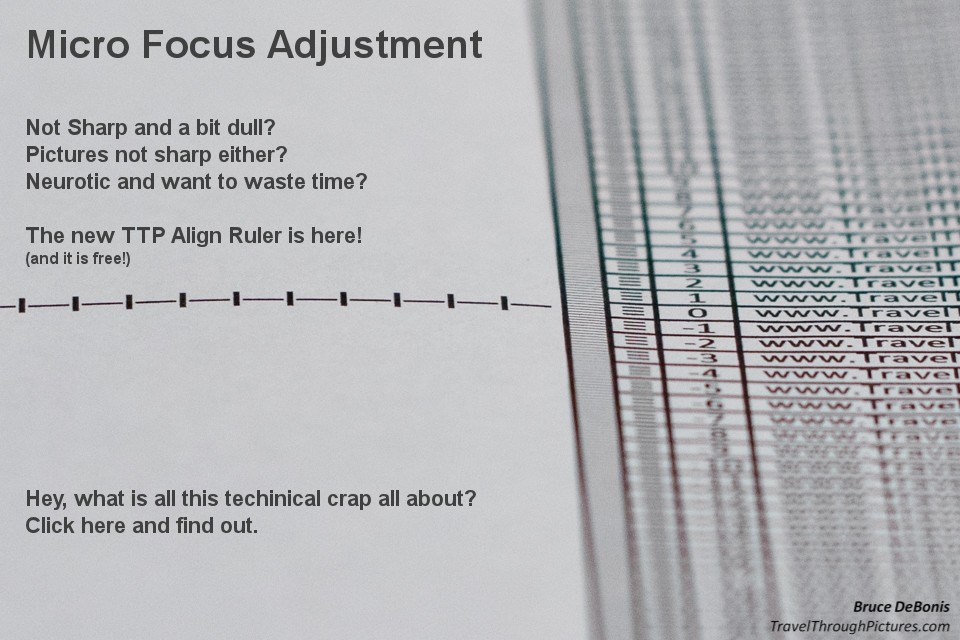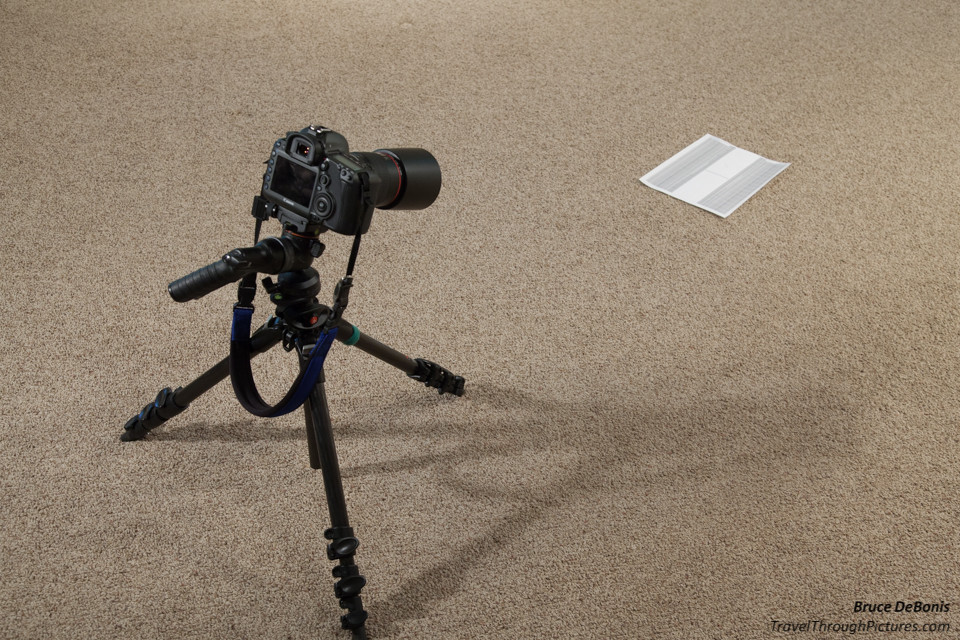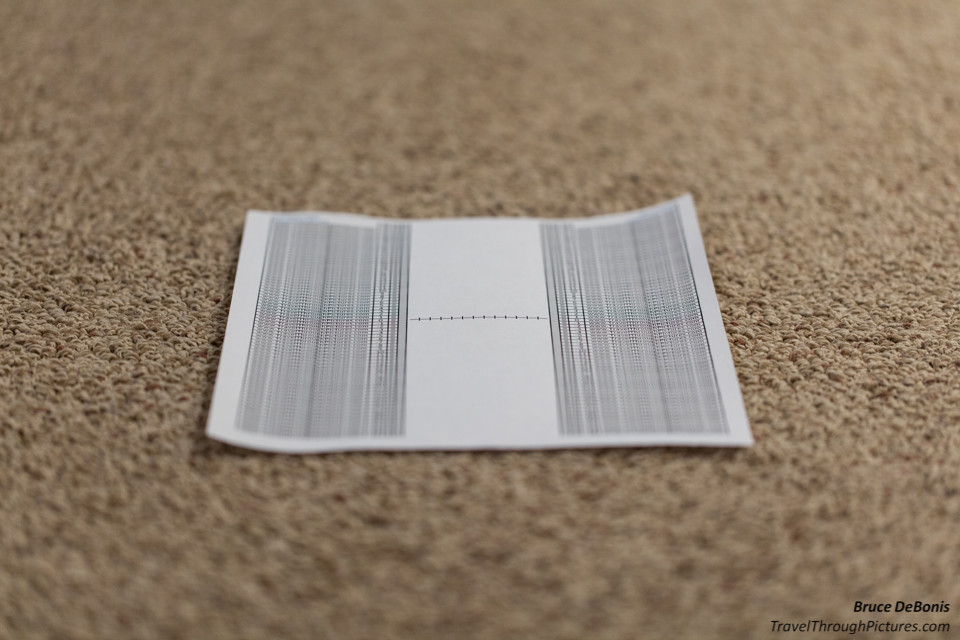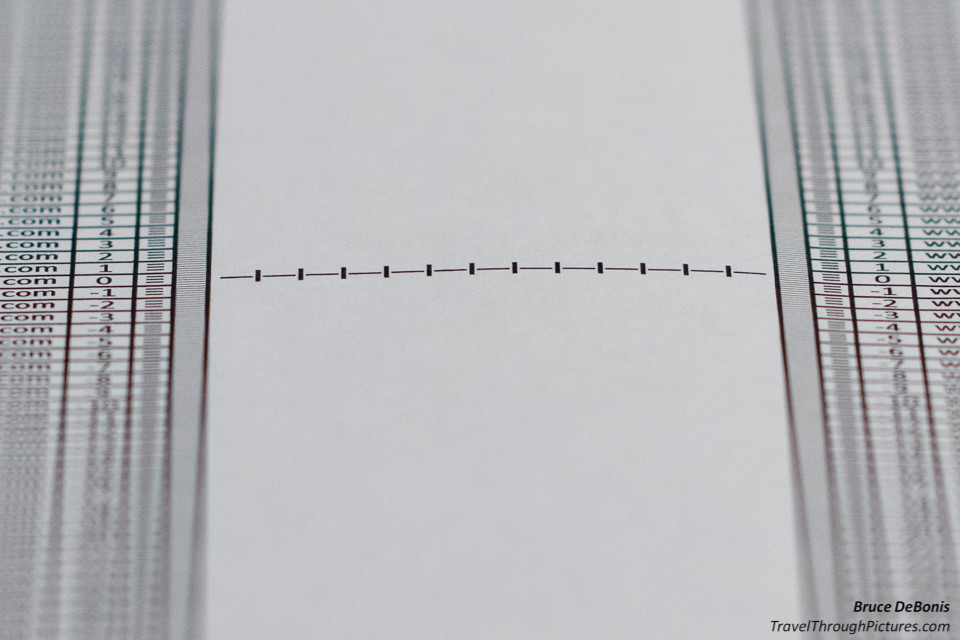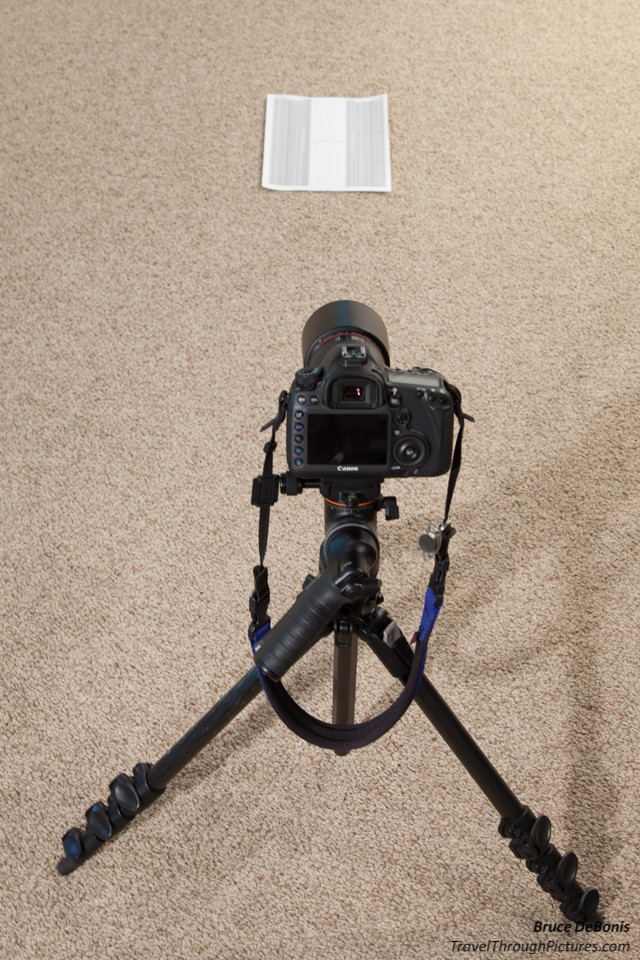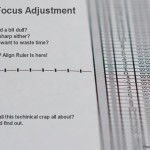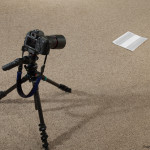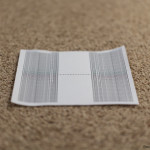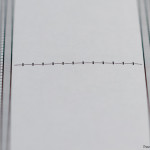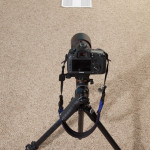Micro Focus Adjustment: The TTP Align Ruler
Are you suffering from a lack of sharpness? Are things looking a bit fuzzy? Is your work just not turning out the way you expected? Well you may be suffering from a lot of awful things, so maybe you should see a counselor. But if your pictures are out of perfect focus more often than not, you may be suffering from micro-focus outawack syndrome. Yes, your camera may just need a simple adjustment.
More than half of my lens-body combinations were not focusing perfectly, something that should not be given the big money I put out for this stuff. The good news is camera makers have put an adjustment feature into many of their bodies (but not all) called micro-focus adjustment (MFA).
I will never buy a camera without this MFA feature, period You need it too.
If your camera does not have this capability, make this capability a top priority for your next DSLR body. It is a must. If your camera doesn’t have it, and you think your pictures should be sharper, then use my method here to determine if your camera and lens system is operating properly. If is not, then contact your manufacturer’s warranty repair facility as they can usually make these adjustments for you.
Click here to read my other blog post on Reikan’s Focal automated tool and the free moiré method to set MFA.
Click here to download the TTP Align Ruler Target
Micro focus adjustment (MFA) is where you adjust, forward or back, for slight errors in your camera’s focusing system. This system includes the lens and therefore focus performance can be different for each lens you install. Even with two copies of the same lens, focus can vary. The latest cameras can not only store settings for each lens type, but each lens! Some can read and remember a lens’s serial number. Wow.
If you like taking pictures where your camera is close to your subject or you use wide open apertures, thus having a narrow depth of field, MFA is just critical. Narrow depth of field, how much is in focus in front and behind your focus point, requires more accurate focusing or you will have a low keeper rate from fuzzy focus. You paid a ton for this stuff and you want sharp pictures. Yo need MFA in yo camaré.
There is quite a bit of speculation as to why a camera’s system can be off, but it is assumed slight variances in manufacturing tolerance of its many parts can, in sum, put your camera consistently out of perfect focus.
Quick Steps for TTP Align Ruler MFA
My TTP Align Ruler is a free alternative to commercial products for sale such as LensAlign and SypderLensCal. These tools are really cool, but why pay for something when you can do it for free? Just follow my instructions below and you will save money and have have your lens focusing perfectly:
- Download and print (set printer to fine) the TTP Align Ruler target here: DOWNLOAD
- Ensure bright, good light to get a fast shutter (do not use fluorescent lights as they flicker)
- Set up your camera
- Av – aperture priority
- Widest aperture – lowest f/stop number for shallow depth of field
- Turn on image stabilization
- ISO, 800 – this will get a fast shutter speed (if your pic is too grainy, drop this down)
- Do not use live view, use your eye piece
- Do not use a flash, you need good light for your system to operate properly
- Select center focus point only – this is very important
- Mount your camera (put it on a tripod) and adjust the height for about two feet above the floor
- Tether your camera to your computer – this is not required but makes transfer of pictures immediate and speeds measurement (you can use LightRoom or Canon’s free EOS Utility)
- Place the target flat on the floor about four to five feet in front of your camera (read more on distances below)
- Level the camera and align the target square in view
- Aim the center focus point to the middle focus line (temporarily zoom in to center the focus point to the line)
- Choose a mid-zoom length
- Defocus your lens either way
- Focus once and snap picture
- View photo on computer, zoom into ruler and examine for focus accuracy
- Adjust MFA in camera by three or four increments
- Reshoot and adjust by two or three increments
- Repeat a few more times and take average accurate setting
- Done
- Drink Pilsner Urquell beer
Tips and Issues
Honestly this is pretty darn simple despite the many steps above. It is so simple, I recommend moving the beer drinking to a point as early in the process as you can and I guarantee no ill effects (setting MFA will no way interfere with beer drinking).
Some more stuff to think about:
- Get the camera low – Actually any angle lower than 45 degrees will work and I found lower to be a bit easier to read the scales. If your camera has trouble locking focus on the horizontal line, first try raising your camera a bit higher but not beyond 45 degrees and then move the target closer to camera. If you are still having trouble, try using the alternative chart with the thicker focus line and average your results if they vary.
- Distance – I use about four to five feet away with a 100mm lens but go ahead and get closer and fill the screen with the target. If the target is too far away, your focus system can’t see the black line. I provided a few different targets with increasing line thickness to help. In general, you want to use the thinnest line that allows your camera to lock focus along with the lowest angle to help see the focus limits.
- Try aiming the focus point closer to the ruler grid – You want to be close to the ruler but you don’t want the camera to grab the ruler grids when focusing. Closer to the ruler makes reading the focus zone easier. Do this by sliding the paper to the side and not by re-aiming the camera as you want the paper to be perpendicular to the camera sensor plane.
- Ensure paper is perpendicular to the camera – An easy way to ensure alignment is to compare the ruler results on each side of the paper; you will see different results if the paper is not square.
- Use tethered shooting – Tethering your camera to a laptop will allow you see your results immediately on your computer.
- Try different zoom lengths – I think a mid-length is fine, but use the length you use the most.
- Take a bunch of shots and retest – On even the most expensive cameras, focus is actually a hit or miss guess with the camera choosing to just give up and beep at you when it is satisfied. So quality of focus can actually vary from shot to shot even if you don’t move the camera or subject. No matter how many mega-bucks you spent on equipment, you bump into Xeno’s paradox where measurement can never be 100% accurate; the camera just has to stop working and let you shoot.
Methods to set MFA
There are a few methods out there and I wrote about a few of them here. Methods include:
- Fully automated such as Reikan’s Focal software and target tool where your computer controls the camera and clicks away for you.
- Moiré method, a free method where you take a picture of a pattern (I provide this pattern in my moiré blog piece) and view it on your camera screen. If there is moiré interference patterns, you have good focus. This has been my recommend method and you can read about it here.
- Brute Force method, another free method where you just take a picture of a brick wall, blow it up on your computer screen, tweak MFA, take it again, and repeat until you think you nailed it.
- Align Guides such as My TTP Align Ruler tool, where you shoot a target and compare grid lines, a ruler, to see actual center focus. I describe my free method here but there are a few commercial tools available for a fee.
What method do I recommend? I recommend trying both the moiré method and my TTP Align Ruler method described here. If I had to pick, I think I like my TTP Align Ruler method the most.
Criticisms of free methods
There are some valid concerns with my free TTP Align Ruler and the moiré methods. The moiré method has been described as difficult to align the screen to be perpendicular to your camera and the moiré patterns are not sensitive enough to be accurate. I have found neither of these items to be true. First, if your camera is not quite perpendicular the method will still work and the patterns will indicate suboptimal alignment (you will see it). Second, if there is a wide variance in MFA adjustment (due to pixel size and counts of your screen and camera), just pick the center point average. Most methods, even the automated methods like Reikan Focal, require this averaging anyway as the camera system always varies in its choice of focus.
My free TTP Align Ruler method I describe here has one potential flaw: Some camera’s focus systems may have trouble focusing on a simple horizontal line. This is true but becoming less so as camera systems improve with each generation of technology. If your camera has trouble focusing on a horizontal line, try one of the alternative charts I provided in the printout with wider center lines. One should work with your camera. And notice, my center line has vertical hash marks to help less sophisticated system grab focus. If it still won’t work, I suspect your camera does not have the more modern MFA adjustment anyway…. Besides, you are welcome to ask for your money back…. oh… this is free!!!
What about Canon’s distance recommendations?
Canon recommends setting MFA at a distance fifty times the focal length of your lens between your camera and focusing chart. For a 100 mm lens, this equals about 16.4 feet of distance and a bit too far to grab focus from my chart. I recommend just putting the chart about the same distance as you normally shoot as that is where you need the most accuracy. So if you shoot flowers from about three feet, the set the MFA from three feet. See my other blog piece for a lens/distance chart using Canon’s recommendation here. I found about four feet to be just fine or, if you are using really wide or long lenses, choose a distance where the chart fills up the viewfinder. Don’t sweat this too much as I found very little variance between distance and MFA.
The Equipment:
- My TTP focus chart printed on white paper
- Your DSLR and a tripod
- About an hour or so of fiddling
- A mildly neurotic but loveable personality

